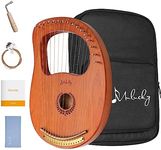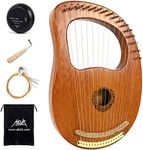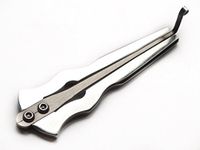Best Harps
From leading brands and best sellers available on the web.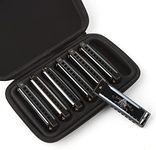
JDR
JDR Harmonica Set of 7 Key of C D E F G A and Bb 10 Holes 20 Tones Blues Harp Diatonic Mouth Organ Harmonica with EVA Protective Case for Adults Kids Beginner Professionals Pop Black New Year Gift
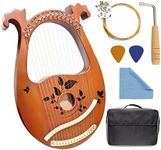
INKNOTE
INKNOTE Lyre Harp, 16 Metal Strings Mahogany Lyre Harp with Tuning Wrench, 16 Pcs Spare String Set, Manual, Picks, Black Gig Bag for Instrument Kids Adult Professional Beginner Music Lovers Gift
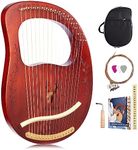
VixxNoxx
17%OFF
VixxNoxx Lyre Harp, 16-String Mahogany Lyra Harp Kit, Stringed Musical Instruments with Tuning Wrench Bag Instructions Extra Strings for Beginners Adults

Eujgoov
Lyre Harp, 19‑String 19‑Tone Tunable Mahogany Body Lyra Harp Portable Musical Instrument Gift
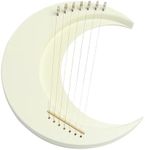
UGPLM
UGPLM Harp Making Material Set Lyre Harp 7 String Soft Sound Portable Classical Lyre Harp with Tunning Wrench Lyre Harp Instrument

Shamanicshop
's Harp by P.Potkin in wooden case Shaman handmade - mouth musical instrument (jaw harp) Beautiful sound Excellent quality maultrommel (jaw harp, dan moi)

Donner
Donner DLH-003 Lyre Harp Mahogany, 16 Metal String Vintage Copper Saddle Ancient Greece Style Lyre Harp with Tuning Wrench and Black Gig Bag

Schwarz
Schwarz SH-12 Jaw Harp - Individual - No.12, Colors may Vary
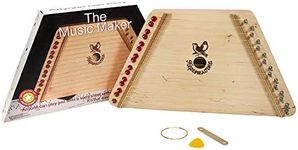
Music Maker
Music Maker Lap Harp
 Kayla Carstens
Kayla CarstensGuide to the Best Harps of 2019
The harp is one of the oldest instruments that are still used today, dating back all the way to ancient Egypt in 3000bc. The original design of the harp was based on the hunting bow and can be seen in Egyptian hieroglyphs. The harp can be found in the history of many cultures such as Asia, The Celtics and many many more. The fact that this instrument has been used throughout history for over 5000 years is a testament to its beauty and importance. The harp can be sued in many different types of music from medieval to classical, jazz to pop and so on. Truly the harp is a diverse instrument and one that deserves to stand out.
We’ve composed this buyer’s guide to help you make the right decision when selecting a harp. It'll help you:
-
Choose the right type of harp,
-
See useful tips about that type of harp,
-
Select the right brand of harp,
- Find accessories you may need for your harp.
Types
Types of Harps:
-
Pedal Harp
-
The pedal harp is used for a symphony, orchestral or solo performances.
-
The pedal harp has 7 pedals at the bottom of the harp which is controlled by the feet to change a note to a natural, flat or sharp.
-
The pedal harp is the largest type of harp.
-
The pedal harp has up to 47 strings.
-
-
Lever Harp
-
The lever harp uses small levers attached to each string to change each note to a sharp or a natural.
-
The lever harp is slightly smaller than the pedal harp.
-
The lever harp has around 22 strings.
-
-
Lap Harp
-
The lap harp is the smallest of these three harps and can be carried with a strap or can be placed on the lap using a lap bar.
-
The lap harp has a considerably lesser amount of strings compared to the lever harp and pedal harp and therefore it limits the amount of solo playing.
-
-
Electro-Harp
-
The electro-harp is a harp that is amplified electrically and uses pickups to receive sound whilst projecting sound through an amplifier.
-
The electro-harp can come in many sizes and with many numbers of strings, it all depends on the instrumentalist.
-
What Reviewers Have to Say
Items that Can be Used with Your Harp:
-
Harp Pickup
-
This is a receiver that you can attach to your harp in order to amplify the sound through an amp if it is not an electric harp.
-
-
Cable:
-
This is a cable that you can use to connect your electric harp to an amplifier.
-
-
Amplifier:
-
This is a speaker that instrumentalists connect their instruments too, to amplify the sound.
-
-
Tuning Wrench:
-
This is a special tool that is used to tighten or loosen the strings of the harp in order to get the correct pitch.
-
-
Hygrometer and Thermometer:
-
This is a device that measures the temperature and amount of moisture in the air in order to make sure that your harp does not crack or sustain damage.
-
-
Harp Cart:
-
This is a small trolley that harpists can use to move large and heavy harps without hurting themselves.
-
-
Harp Case:
-
This is a protective case that can be put on the harp to make sure it does not retain any damage.
-
-
Lever Markers:
-
Lever markers are markers that the harpist can place on the harps levers to make it easier to identify which lever will sharpen or flatten the note.
-
-
Harp Stand:
-
A harp stand is a small stool on which you can place your harp so that it is in a better position for playing.
-
-
Harp Strings:
-
Just like any other instrument, harp strings can break and so it is always a good idea to keep spare strings around.
-
Important Features
Tips for Consumers:
-
What type of harp is best for beginners?
-
It is suggested that a lever harp is better for beginners as it can be used up until grade 8 when it has 34 strings and allows a full range of genres.
-
The concert/pedal harp can also be used but is more complicated and due to an increased number of strings also can be used to play many genres.
-
The lever harp is mostly used to play folk music whilst the concert/pedal harp is mainly used for classical and solo performances.
-
You as the instrumentalist should also consider the weight of the instrument, the lever harp can weigh around 10kg but the concert/pedal harp can end weighing around 38kg. So if you are looking for something that is easy to transport it may be better to buy a lever harp.
-
-
The Harp is a Very Personal Instrument
-
Like a lot of instruments, the harp is a very personal instrument, as in the end it should sound and feel right for you, whether that is with low or high tension strings, a loud or softer sound. It is always up to the instrumentalist.
-
-
Whether to buy or rent a harp?
-
Try to calculate the amount your rental fees will add up to and compare it to the actual price of the harp, before deciding to rent as it can add up to a lot of money in the end that you could have saved by rather purchasing the harp.
-
It is important to take note that instrument shops will swap out your harp for a bigger or better quality one if needed.
-
Top-Rated Brands
Different Brands of Harps:
-
Salvi:
-
Salvi Harps was brought into being in the early 19th century by Giranimo Salvi and is now one of the leading harp manufacturers in the world. The name Salvi is associated with high-quality harps for all instrumentalists from beginners to professionals and orchestra players.
-
-
Dusty Strings:
-
Dusty Strings was started by Ray Mooers in 1979 and are now one of the biggest and highest quality manufacturers of harps in the USA. They are committed to the belief that acoustic music can change people lives. Dusty Strings can currently be found in Seattle, Washington.
-
-
Aoyama:
-
Aoyama is a family business that was started in 1880 by Jitaroh Aoyama. They are one of the many leading manufacturers of the harp and provide good quality for beginners and professionals alike. Aoyama can currently be found in Yoshida-gun, Fukui.
-

